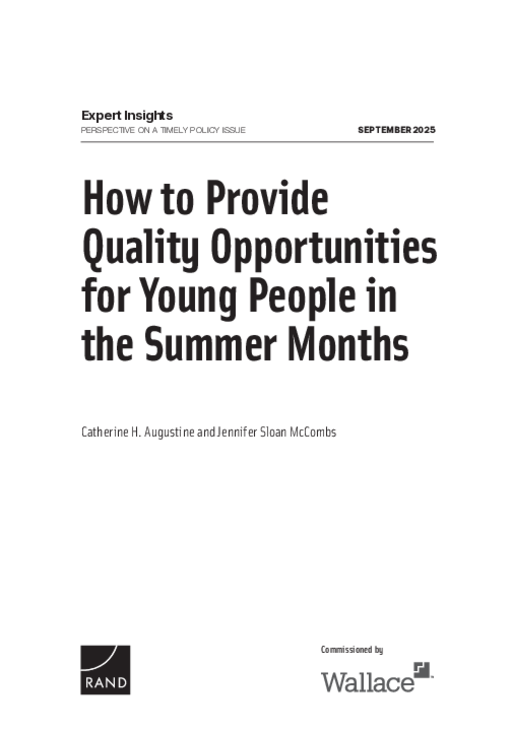Back to Overview
How to Provide Quality Opportunities for Young People in the Summer Months
Table of Contents
Implementation Tips
The authors suggest that practitioners, policymakers, researchers, and funders should capitalize on summer learning to benefit youth. With the evidence base in mind, they identify specific ways these stakeholders can support voluntary, high-quality summer learning opportunities.
Districts and Practitioners:
- School districts should consider offering voluntary summer learning programs as part of their efforts to advance student achievement, particularly if they can offer these programs over multiple consecutive summers. Districts offering such voluntary academic programs could:
- offer at least five weeks of programming—and preferably six—with 1-2 hours of instruction for each academic subject;
- include enrichment opportunities; ·
- conduct early planning geared toward strong student attendance, productive use of instructional time, and high-quality instruction;
- make summer learning programs a core organizational function.
- Districts unable to consistently offer in-person voluntary summer programs should consider offering scaffolded at-home learning programs.
- Communities should consider summer as part of their efforts to advance youth development.
- All summer program providers should align program content and staffing to the needs and outcomes the program is addressing.
Policymakers:
- Policymakers may consider prioritizing high-quality summer programs, especially for youth who do not have access to these opportunities.
Funders:
- Funders may want to encourage researchers to measure outcomes that align with program content.
Researchers:
- Because much summer learning literature does not include sufficient information on interventions and implementation, researchers could help provide more information about programs and their implementation in articles and reports to maximize effectiveness.
Topics:

